

The Development of Phonological Skills. 20 Meaningful Second Grade Math Games Kids Will Enjoy. Second grade math students are mastering concepts that prepare them for harder challenges ahead, like multiplication and fractions.
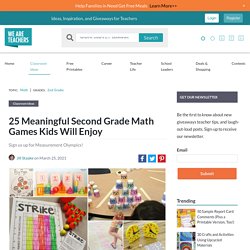
These second grade math games align with Common Core standards and teach skills like skip counting, measuring and graphing, and working with money and time. Best of all, they’re fun to play! Gifted Children with Attention Deficit Hyperactivity Disorder. Click the "References" link above to hide these references.
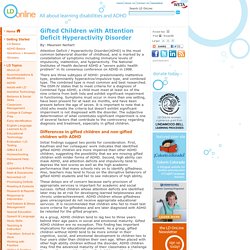
American Academy of Pediatrics (2000). Clinical practice guidelines: diagnosis and evaluation of the child with attention-deficit/hyperactivity disorder. Gifted Children with Attention Deficit Hyperactivity Disorder. Reading Comprehension Strategy Series: How To Teach Visualizing in the Upper Elementary Classroom — THE CLASSROOM NOOK. As adults, it’s hard to imagine NOT visualizing while we read, since it comes so naturally to a seasoned reader.
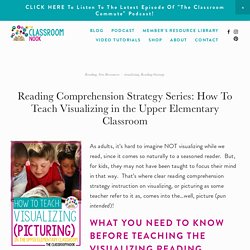
But, for kids, they may not have been taught to focus their mind in that way. That’s where clear reading comprehension strategy instruction on visualizing, or picturing as some teacher refer to it as, comes into the…well, picture (pun intended)! One of the most common ways to teach students visualizing is to describe it as creating a picture or movie in our mind. We want students to constantly be adding to, changing, tweaking, and revising their mental images just like a movie is constantly evolving.
In fictional texts, readers should visualize the settings, characters, and even the actions of those characters. Mathematics Strategies to Support Intensifying Interventions. NCII developed a series of mathematics lessons and guidance documents to support special education instructors, mathematics specialists, and others working with students who struggle with mathematics.
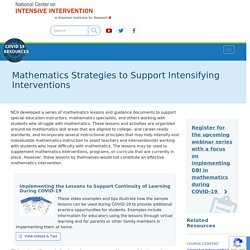
These lessons and activities are organized around six mathematics skill areas that are aligned to college– and career-ready standards, and incorporate several instructional principles that may help intensify and individualize mathematics instruction to assist teachers and interventionists working with students who have difficulty with mathematics. The lessons may be used to supplement mathematics interventions, programs, or curricula that are currently in place. However, these lessons by themselves would not constitute an effective mathematics intervention. Florida Center for Reading Research. Research-Based Education Strategies & Methods. Concrete Representational Abstract (CRA) is a three step instructional approach that has been found to be highly effective in teaching math concepts.
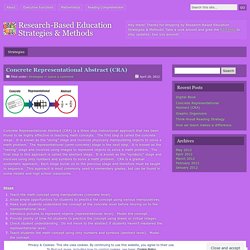
The first step is called the concrete stage. It is known as the “doing” stage and involves physically manipulating objects to solve a math problem. The representational (semi-concrete) stage is the next step. It is known as the “seeing” stage and involves using images to represent objects to solve a math problem. The final step in this approach is called the abstract stage. Steps Teach the math concept using manipulatives (concrete level).Allow ample opportunities for students to practice the concept using various manipulatives.Make sure students understand the concept at the concrete level before moving on to the representational level.Introduce pictures to represent objects (representational level).
A Suggested Order for Teaching the Basic Multiplication Facts - Shelley Gray. Skip to content Menu A Suggested Order for Teaching the Basic Multiplication Facts.
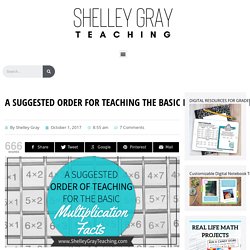
Top Five Vocabulary Strategies for English Language Learners. 50,000 words by high school graduation.
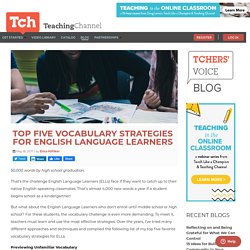
That’s the challenge English Language Learners (ELLs) face if they want to catch up to their native English-speaking classmates. That’s almost 4,000 new words a year if a student begins school as a kindergartner! But what about the English Language Learners who don’t enroll until middle school or high school? For these students, the vocabulary challenge is even more demanding. To meet it, teachers must learn and use the most effective strategies. Previewing Unfamiliar Vocabulary In preparation for my lessons, I scan the chapters we'll be reading together as a class to identify words that might slow down student comprehension of the text.
Page 1: Overview of PALS. Page 1: Overview of PALS As they search for an approach capable of both meeting the needs of diverse learners and strengthening the instruction in the general education classroom (i.e., Tier 1 instruction), the kindergarten and first-grade teachers at Washington Elementary discover Peer Assisted Learning Strategies for reading (PALS-R or PALS).
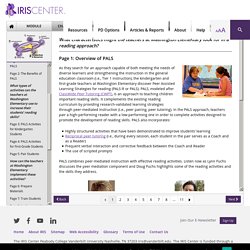
PALS, modeled after ClassWide Peer Tutoring (CWPT), is an approach to teaching children important reading skills. It complements the existing reading curriculum by providing research-validated learning strategies through peer-mediated instruction (i.e., peer pairing, peer tutoring). In the PALS approach, teachers pair a high-performing reader with a low-performing one in order to complete activities designed to promote the development of reading skills. ED528940. Instruction of Metacognitive Strategies Enhances Reading Comprehension and Vocabulary Achievement of Third-Grade Students. Comprehension is the reason for reading, and vocabulary plays a significant role in comprehension (National Institute of Child Health and Human Development, 2000).
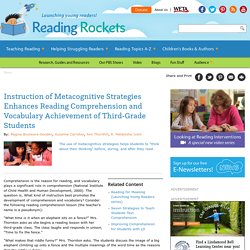
The question is, What kind of instruction best promotes the development of comprehension and vocabulary? Consider the following reading comprehension lesson (the teacher's name is a pseudonym): "What time is it when an elephant sits on a fence? " Mrs. Thornton asks as she begins a reading lesson with her third-grade class. "What makes that riddle funny? " "Today you will read an expository passage and learn more about elephants. Mrs. "In the passage you will read, the word versatile is used as an adjective. SPED 526 Dysgraphia - Google Slides. What Is The Concrete Pictorial Abstract Approach? CPA Maths: A Guide For Primary Teachers. The Concrete Pictorial Abstract approach is now an essential tool in teaching maths at KS1 and KS2, so here we explain what it is, why its use is so widespread, what misconceptions there may be around using concrete resources throughout a child’s primary maths education, and how best to use the CPA approach yourself in your KS1 and KS2 maths lessons.
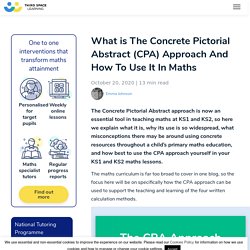
The maths curriculum is far too broad to cover in one blog, so the focus here will be on specifically how the CPA approach can be used to support the teaching and learning of the four written calculation methods. What is the Concrete Pictorial Abstract in Maths? The Concrete Pictorial Abstract (CPA) approach is a system of learning that uses physical and visual aids to build a child’s understanding of abstract topics. Pupils are introduced to a new mathematical concept through the use of concrete resources (e.g. fruit, Dienes blocks etc). Iep. Towards More Inclusive Schools: An Application of Hospitality in. Maria. Maria is twelve years old and in the 7th grade. She was an exemplary student throughout elementary school. A review of Maria’s records indicate that she received grades of "B" or higher in all of her classes from first through fourth grade. What Is Differentiated Instruction? Click the "References" link above to hide these references.
Csikszentmihalyi, M. (1997). Finding Flow: The Psychology of Engagement with Everyday Life. New York: Basic Books.